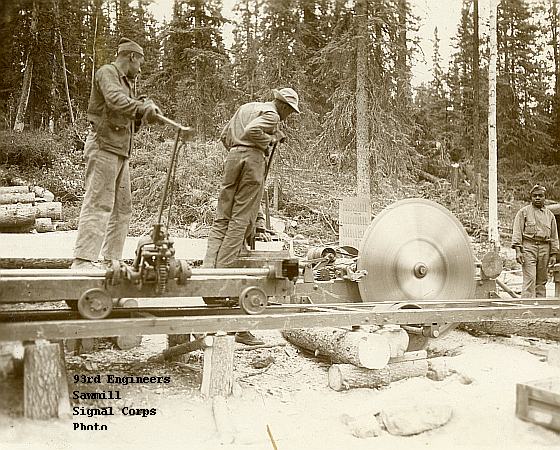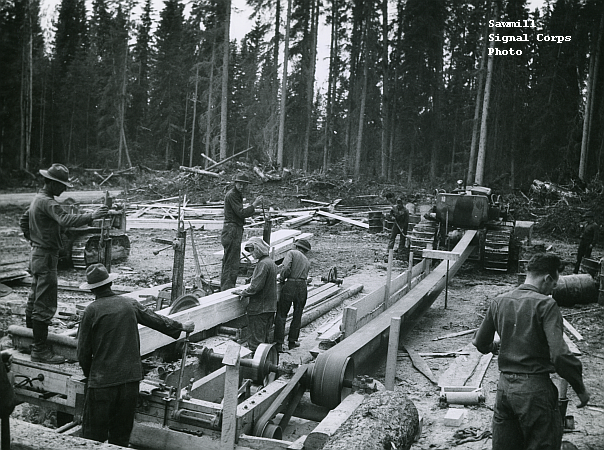
Spinning steel blades shrieked as they sliced through trees harvested along the path of the Alaska Highway. Men stood above and behind the blades, pulling levers, guiding the logs through, and the spinning blades helped roaring trucks and dozers demolish the quiet of the deep north woods. Sawyers proved as essential to the massive project as catskinners, truck drivers and axe men.
The soldiers built bridges of timber, driving pilings every twenty feet or so and spanning them with timber stringers. Across the stringers they laid planks, decking, for the roadbed. They also built barges to get across rivers too big to bridge—barges made of planks.
In the early weeks of the project, men fashioned planks with two-man handsaws and axes. But culvert, bridge, and barge builders consumed enormous quantities of lumber. Up in Alaska, soldiers of the 97th found an old sawmill along the way and quickly put it in operation. And the Army brought in bigger sawmills as quickly as they could. In the end the 97th set up a sawmill near Mentasta pass and assigned one whole company to run it.

Civilian contractors building bridges at northernmost end of the Highway had their own sawmill, but it couldn’t keep up… They raided a collapsed bridge near Chitina to salvage its timbers.
Down in Yukon by mid-summer two regiments—the 340th and the 93rd worked south toward the continental divide. The 93rd stationed a company to run a sawmill near Morley Lake.

The soldiers of the 97th worked into an Alaska winter to complete the last section of the Highway. And then the Army scattered them along the way to keep the Highway open for convoys. Facing a winter in tents, the 97th found a new use for its sawyer soldiers—turning out lumber for rough barracks.
That appears to be an Allis-Chalmers L-90 power unit running the sawmill in the second picture. I have a cylinder head off of one
You clearly know a lot more about this equipment than I do. Thank you for the information.